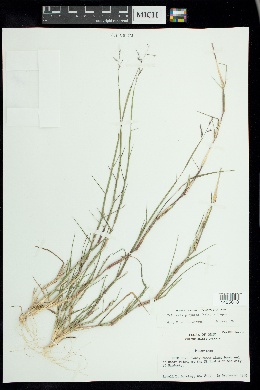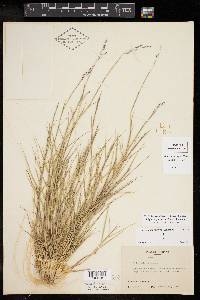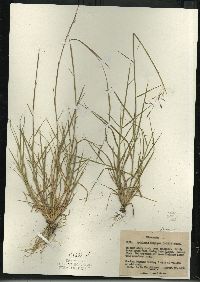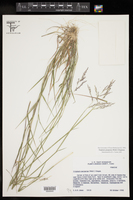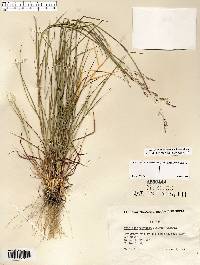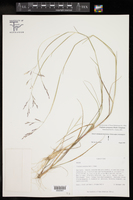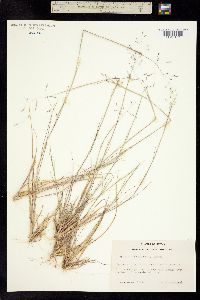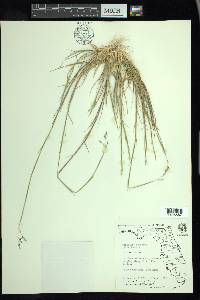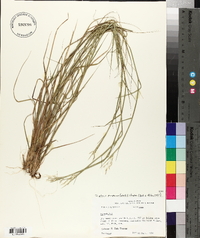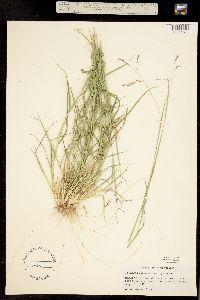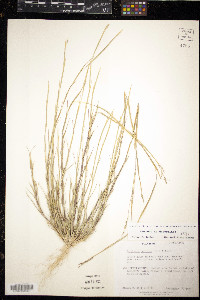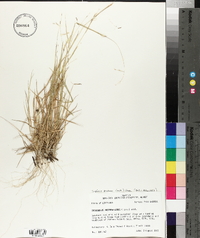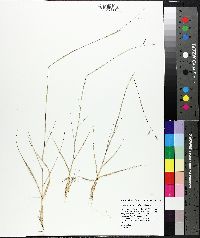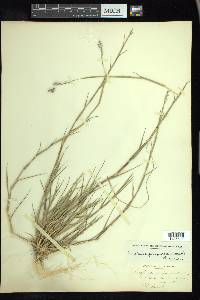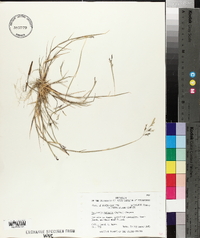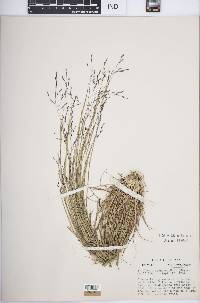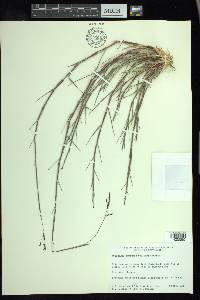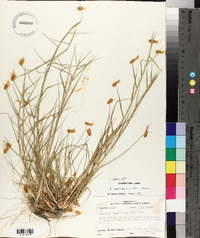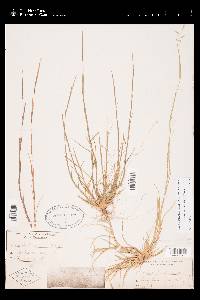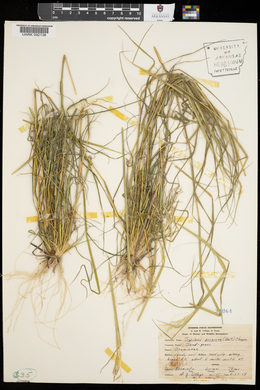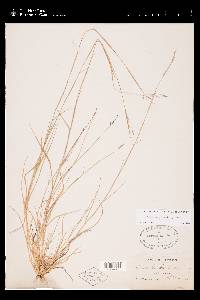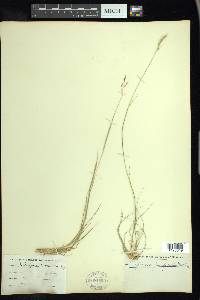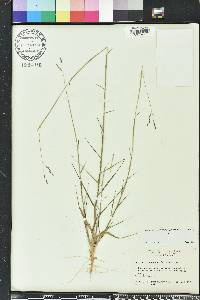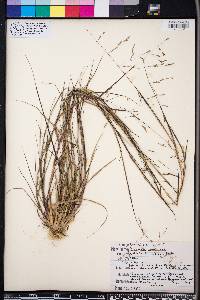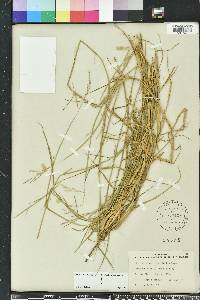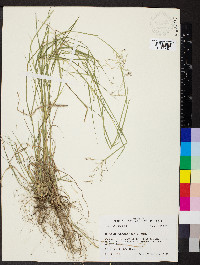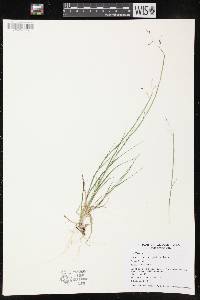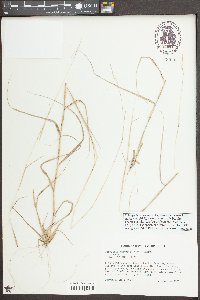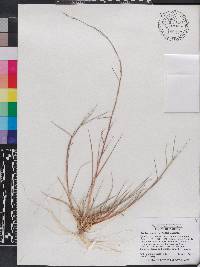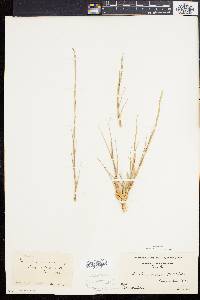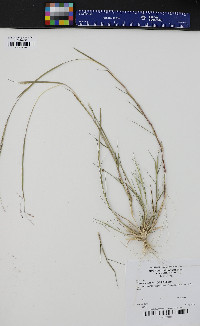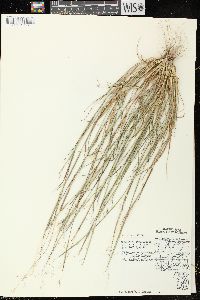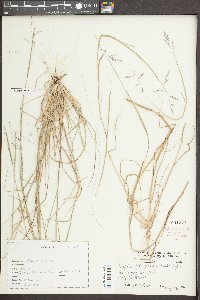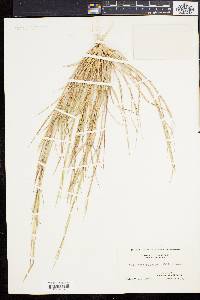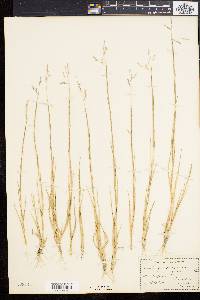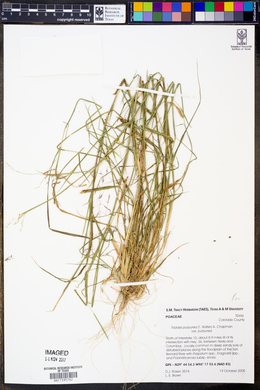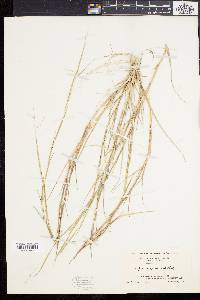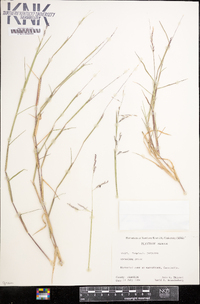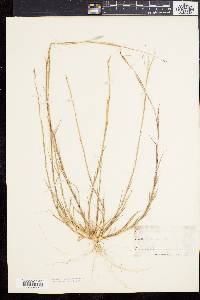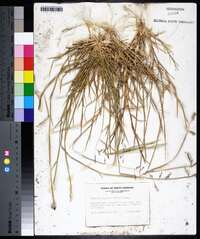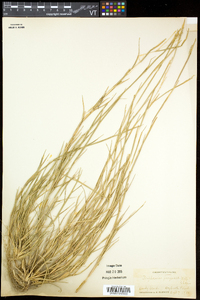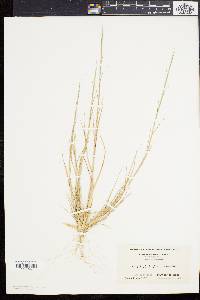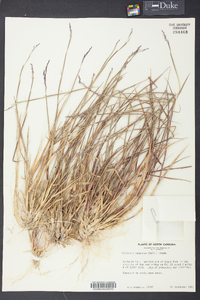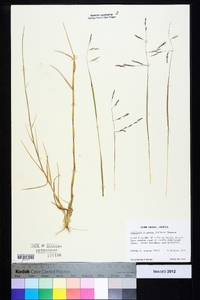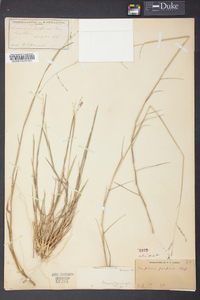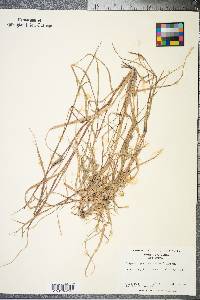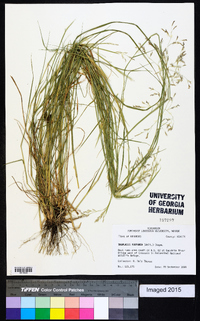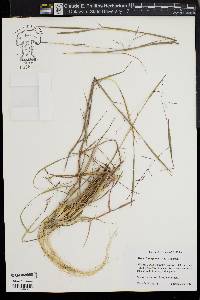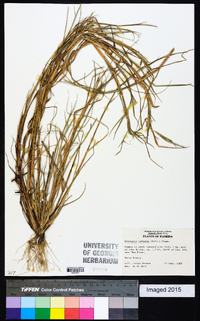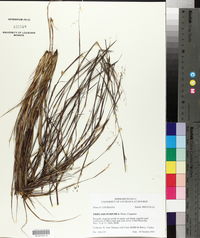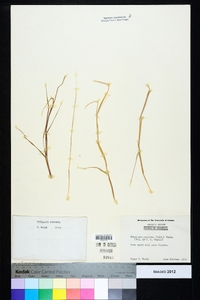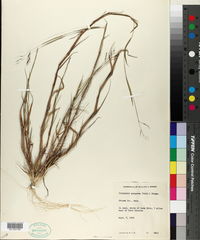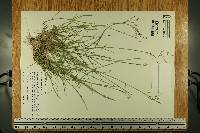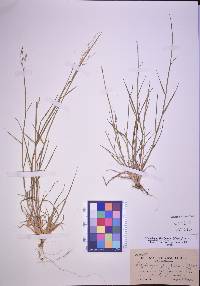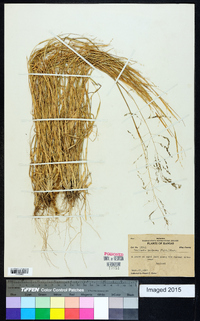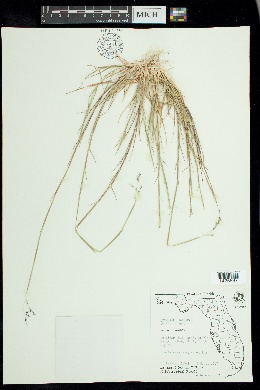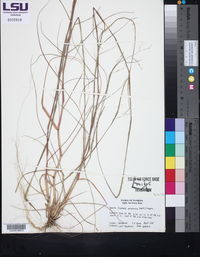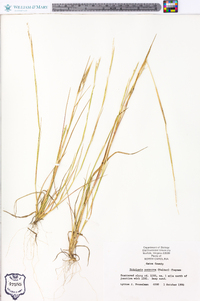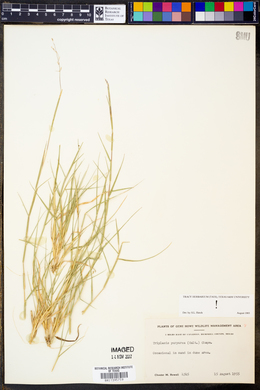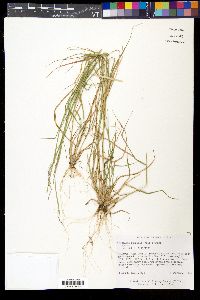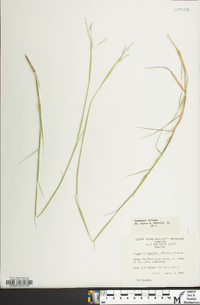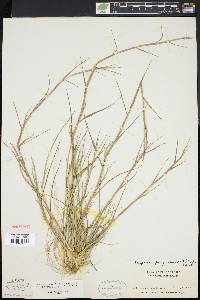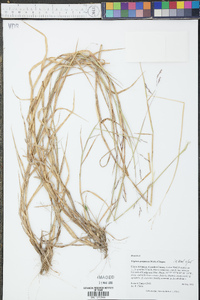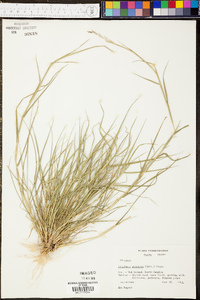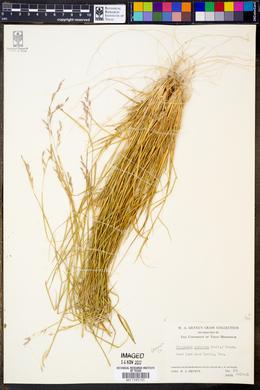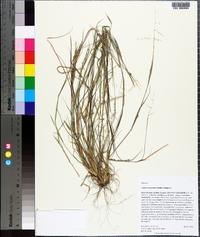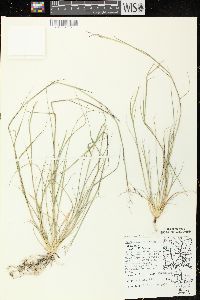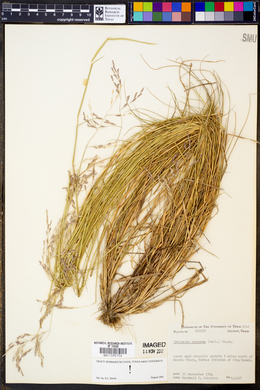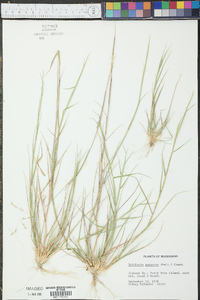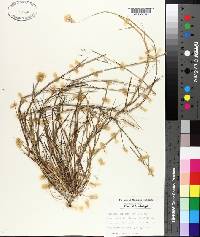Triplasis purpurea
|
|
|
|
Family: Poaceae
Purple Sand Grass, more...Purple Sandgrass
[Aira purpurea, moreGlyceria brevifolia (Muhl.) Schult., Merisachne drummondii , Panicularia brevifolia (Muhl.) Porter, Sieglingia purpurea (Walter) Kuntze, Tricuspis purpurea , Triodia purpurea , Triplasis caribensis (R.W. Pohl) Beetle, Triplasis floridana Gand., Triplasis glabra Gand., Triplasis intermedia Nash, Triplasis sparsiflora Chapm., Uralepis aristulata Nutt., Uralepis purpurea (Walter) Nutt.] |
Plants annual and tufted or perennial and occasionally rhizomatous. Culms 14-100 cm, usually ascending; internodes glabrous. Ligules to 1 mm, of hairs; blades 1-5 mm wide, flat or involute, hispid or with papillose-based hairs. Panicles 3-7 cm long, 1-6 cm wide. Spikelets 6.5-9 mm, with 3-4 florets. Glumes about 2 mm, glabrous or scabrous, apices erose; lemmas 3-4 mm, lobes shorter than 1 mm, rounded; awns shorter than 2 mm, straight; paleas about 2.5 mm, keels ciliate; anthers about 2 mm, reddish-purple. Caryopses about 2 mm long, 0.6 mm wide, tapering distally, tan. 2n = 40. Triplasis purpurea grows in sandy soils throughout the eastern and central portion of the Flora region, extending southward through Mexico to Costa Rica. It is far more common in maritime dunes than T. americana. Plants in the Flora region belong to Triplasis purpurea (Walter) Chapm. var. purpurea. Annual or perennial tufted herb, sometimes bearing rhizomes 14 cm - 1.07 m tall Leaves: with open sheaths and ligules made of hairs to 1 mm long. The blades are 1 - 5 mm wide, flat or with margins rolling toward the upper surface of the midvein (involute), and have stiff or warty-based hairs. Inflorescence: terminal and sometimes axillary, branched (panicle), open, 3 - 7 cm long, 1 - 6 cm wide, the tips reaching above the leaves, bearing few spikelets. Fruit: a tan caryopsis, about 2 mm long, 0.6 mm wide, compressed, tapering at the tip. Culm: 14 cm - 1 m long, often ascending, with hairless internodes. Spikelets: purplish, 6.5 - 9 mm long, laterally compressed. Glumes: single-veined, about 2 mm long with unevenly cut tips, longitudinally ridged, hairless or rough. Florets: three or four per spikelet, with three reddish purple anthers about 2 mm long and pink to purple stigmas. Lemma: 3 - 4 mm long, with three long-haired veins, lobes shorter than 1 mm, and a straight awn shorter than 2 mm Palea: about 2.5 mm long with a hairy longitudinal ridge, the uppermost hairs longest. Similar species: No information at this time. Flowering: late August to late September Habitat and ecology: Local in dry sandy soil with little competition, near Lake Michigan beaches, and in sandy cinders along railroad ballast. Occurence in the Chicago region: native Etymology: Triplasis comes from the Greek word triplasios, meaning "facing three ways." Purpurea means purple. Author: The Morton Arboretum Slender annual 2-8 dm; blades 1-2 mm wide, shorter than their sheaths, the upper much reduced; terminal infl 2-8 cm, with a few branches each bearing a few 2-5-fld purple spikelets; glumes narrowly lanceolate, 2-4 mm; lemmas 3-4 mm, the short lobes rounded or erose, the hairy awn 1 cm or less; rachilla-joints half as long as the lemma; included panicles and solitary spikelets produced within the lower sheaths. Dry sand along the coast from N.H. to Tex.; also along the shores of the Great Lakes, and in the interior from Ind. to Minn., Colo., and Tex. Gleason, Henry A. & Cronquist, Arthur J. 1991. Manual of vascular plants of northeastern United States and adjacent Canada. lxxv + 910 pp. ©The New York Botanical Garden. All rights reserved. Used by permission. From Flora of Indiana (1940) by Charles C. Deam This species is local in the dry sand of the dunes about Lake Michigan and common in a similar habitat in Newton County about three miles northwest of Morocco where it occurs in open sandy woods and fallow fields over an area at least 4 miles long and a mile wide (1938). …… Indiana Coefficient of Conservatism: C = 5 Wetland Indicator Status: N/A |
|
|
|


